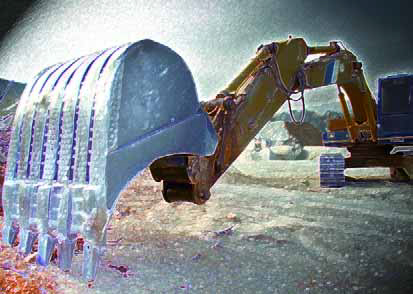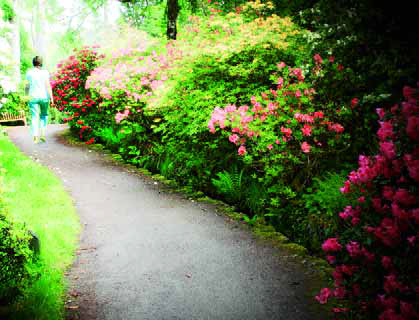ARTICLES
Advance Search
Aquatic Health
Aquatic Health, Fitness & Safety
Around the Internet
Aquatic Culture
Aquatic Technology
Artful Endeavors
Celebrity Corner
Life Aquatic
Must-See Watershapes
People with Cameras
Watershapes in the Headlines
Art/Architectural History
Book & Media Reviews
Commentaries, Interviews & Profiles
Concrete Science
Environment
Fountains
Geotechnical
Join the Dialogue
Landscape, Plants, Hardscape & Decks
Lighter Side
Ripples
Test Your Knowledge
The Aquatic Quiz
Other Waterfeatures (from birdbaths to lakes)
Outdoor Living, Fire Features, Amenities & Lighting
Plants
Ponds, Streams & Waterfalls
Pools & Spas
Professional Watershaping
Structures (Editor's Notes)
Travelogues & History
Water Chemistry
WaterShapes TV
WaterShapes World Blog
Web Links
Around the Internet
Aquatic Culture
Aquatic Technology
Artful Endeavors
Celebrity Corner
Life Aquatic
Must-See Watershapes
People with Cameras
Watershapes in the Headlines
In one form or another, almost every landscape project uses stone. Whether it's ledger, rubble, pebbles or flagstone - on its own or woven into other hardscape materials - when it comes to shaping exterior environments, stone is one of the most versatile of all materials at your disposal. In my experience as a stone supplier, however, few landshapers understand enough about the properties and characteristics of available stone products to use them as effectively as possible. This is true despite the fact that inappropriate stone usage creates liabilities for both the installer and the client and that the need for eventual replacement incurs great cost down the line. Simply knowing which types of stone are dense and which are soft, for example, is enough to prevent many problems with installations and will make landscapes more successful. While placing beautiful slate on an exterior deck may seem a great idea visually, for instance, it will eventually disintegrate as a result of exposure to the elements, nobody involved will be happy - and everybody will recognize that it would have been better to
In one form or another, almost every landscape project uses stone. Whether it's ledger, rubble, pebbles or flagstone - on its own or woven into other hardscape materials - when it comes to shaping exterior environments, stone is one of the most versatile of all materials at your disposal. In my experience as a stone supplier, however, few landshapers understand enough about the properties and characteristics of available stone products to use them as effectively as possible. This is true despite the fact that inappropriate stone usage creates liabilities for both the installer and the client and that the need for eventual replacement incurs great cost down the line. Simply knowing which types of stone are dense and which are soft, for example, is enough to prevent many problems with installations and will make landscapes more successful. While placing beautiful slate on an exterior deck may seem a great idea visually, for instance, it will eventually disintegrate as a result of exposure to the elements, nobody involved will be happy - and everybody will recognize that it would have been better to
I like to tell people that I have the greatest job in the world. It's true, and whenever I start working with a new client, I feel like a kid in a candy store. Look at it this way: As a watershaper, I get paid to use my ideas, experience, imagination and creativity to make my clients' dreams come true. Essentially, we're big kids playing with very big toys, and clients respond to our enthusiasm in a big way. And the best thing about it is that exterior designs are like fingerprints: Each one is different; every client has his or her own set of priorities; and every property calls for a
I like to tell people that I have the greatest job in the world. It's true, and whenever I start working with a new client, I feel like a kid in a candy store. Look at it this way: As a watershaper, I get paid to use my ideas, experience, imagination and creativity to make my clients' dreams come true. Essentially, we're big kids playing with very big toys, and clients respond to our enthusiasm in a big way. And the best thing about it is that exterior designs are like fingerprints: Each one is different; every client has his or her own set of priorities; and every property calls for a
It only makes sense that designers should promote themselves in ways that reflect their abilities. When we look at the materials many watershapers use to market their services, however, it's obvious that everything from business cards to brochures and web sites has often been assembled without much attention being paid to how messages are conveyed in words, images or graphics. Recognizing these shortcomings in others prompted me to reflect on my own approach to marketing and promotion - which in turn led me to pick up a copy of Marketing for Architects and Designers by Harold Linton, Laura Clary and Steven Rost (W.W. Norton & Company, 2006). As the helpfully descriptive title indicates, this 150-page, beautifully illustrated text defines what designers need to know about
It only makes sense that designers should promote themselves in ways that reflect their abilities. When we look at the materials many watershapers use to market their services, however, it's obvious that everything from business cards to brochures and web sites has often been assembled without much attention being paid to how messages are conveyed in words, images or graphics. Recognizing these shortcomings in others prompted me to reflect on my own approach to marketing and promotion - which in turn led me to pick up a copy of Marketing for Architects and Designers by Harold Linton, Laura Clary and Steven Rost (W.W. Norton & Company, 2006). As the helpfully descriptive title indicates, this 150-page, beautifully illustrated text defines what designers need to know about
One would like to think that if there was anything all watershapers were good at doing, it would be digging holes. As with many other watershaping activities, however, it is apparent that some are better at it than others and that the excavation portion of a project either does a good job of setting the stage for great things to follow - or involves errors that can project themselves all the way through to the finished product. In my view, getting things right at this stage is as important as any other step in the design, engineering or construction process and is actually
One would like to think that if there was anything all watershapers were good at doing, it would be digging holes. As with many other watershaping activities, however, it is apparent that some are better at it than others and that the excavation portion of a project either does a good job of setting the stage for great things to follow - or involves errors that can project themselves all the way through to the finished product. In my view, getting things right at this stage is as important as any other step in the design, engineering or construction process and is actually
This has been a year of changes. Consider the weather, which, in my corner of the world, saw unusual, sustained periods of freezing temperatures never witnessed in my lifetime along with inconceivably low rainfall totals that make water rationing a very real possibility on southern California's horizon. Whether these climatic extremes are, as some scientists are saying, a consequence of global warming or not, the fact of the matter is that these phenomena are worrisome and their implications need to be


















Making Changes